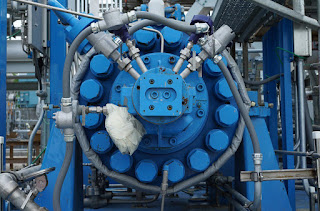One leading expert describes what it would take to do it economically—and on a huge scale.
At current rates of greenhouse-gas emissions, the world could lock in 1.5 ˚C of warming as soon as 2021, an analysis by the website Carbon Brief has found. We’re on track to blow the carbon budget for 2 ˚C by 2036.
Amid this daunting climate math, many researchers argue that capturing carbon dioxide from power plants, factories, and the air will have to play a big part in any realistic efforts to limit the dangers of global warming.
If it can be done economically, carbon capture and storage (CCS) offers the world additional flexibility and time to make the leap to cleaner systems. It means we can retrofit, rather than replace, vast parts of the global energy infrastructure. And once we reach disastrous levels of warming, so-called direct air capture offers one of the only ways to dig our way out of trouble, since carbon dioxide otherwise stays in the atmosphere for thousands of years.
Julio Friedmann has emerged as one of the most ardent advocates of these technologies. He oversaw research and development efforts on clean coal and carbon capture at the US Department of Energy’s Office of Fossil Energy under the last administration. Among other roles, he’s now working with or advising the Global CCS Institute, the Energy Futures Initiative, and Climeworks, a Switzerland-based company already building pilot plants that pull carbon dioxide from the air.
In an interview with MIT Technology Review, Friedmann argues that the technology is approaching a tipping point: a growing number of projects demonstrate that it works in the real world, and that it is becoming more reliable and affordable. He adds that the boosted US tax credit for capturing and storing carbon, passed in the form of the Future Act as part of the federal budget earlier this year, will push forward many more projects and help create new markets for products derived from carbon dioxide (see The carbon-capture era may finally be starting).
But serious challenges remain. Even with the tax credit, companies will incur steep costs by adding carbon capture systems to existing power plants. And a widely cited 2011 study, coauthored by MIT researcher Howard Herzog, found that direct air capture will require vast amounts of energy and cost 10 times as much as scrubbing carbon from power plants.
In late February you wrote a Medium post saying that with the passage of the increased tax credit for carbon capture and storage, we’ve “launched the climate counter-strike.” Why is that a big deal?
It actually sets a price on carbon formally. It says you should get paid to not emit carbon dioxide, and you should get paid somewhere between $35 a ton and $50 a ton. So that is already a massive change. In addition to that, it says you can do one of three things: you can store CO2, you can use it for enhanced oil recovery, or you can turn it into stuff. Fundamentally, it says not emitting has value.
As I’ve said many times before, the lack of progress in deploying CCS up until this point is not a question of cost. It’s really been a question of finance.
The Future Act creates that financing.
Read more at The Daunting Math of Climate Change Means We’ll Need Carbon Capture

No comments:
Post a Comment